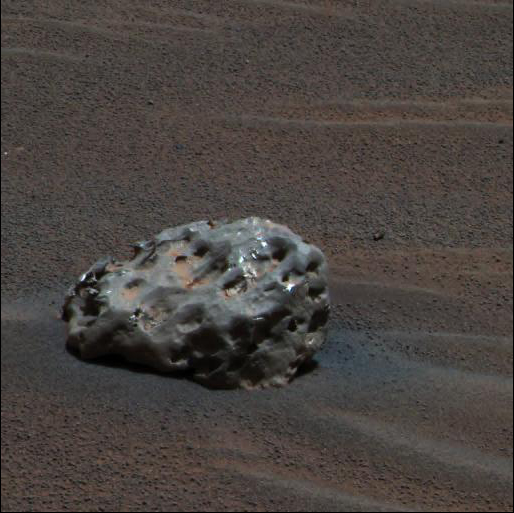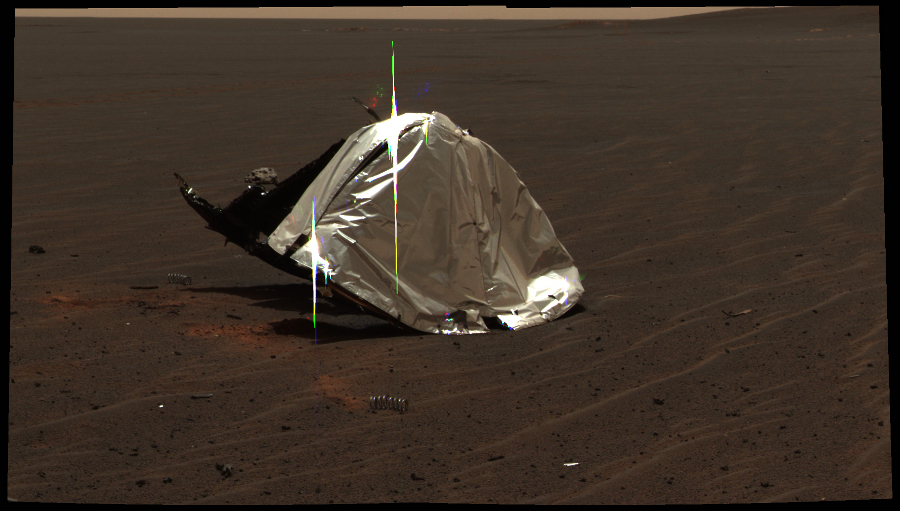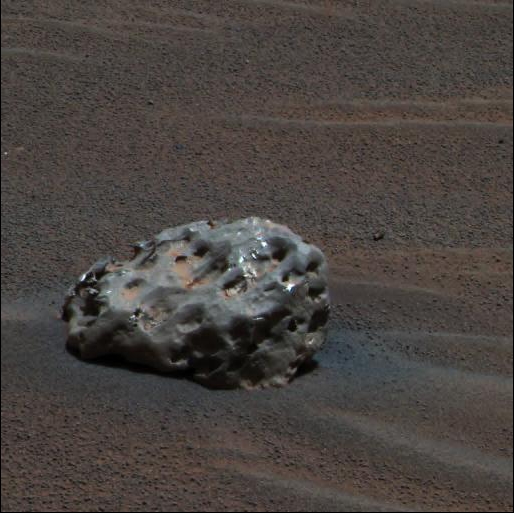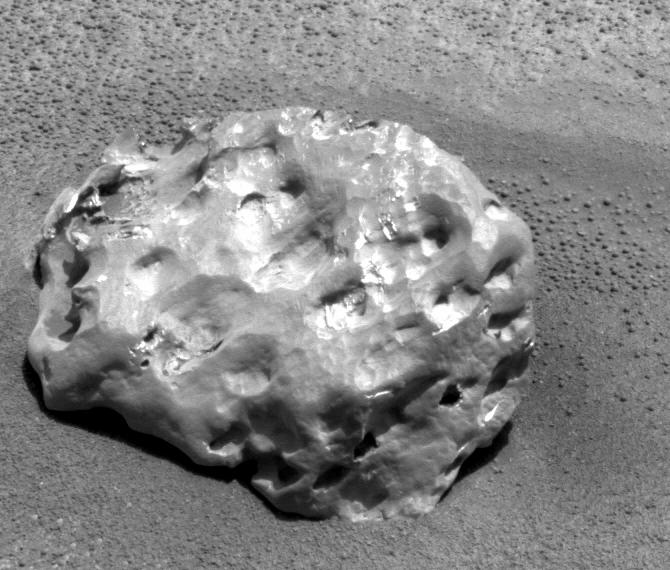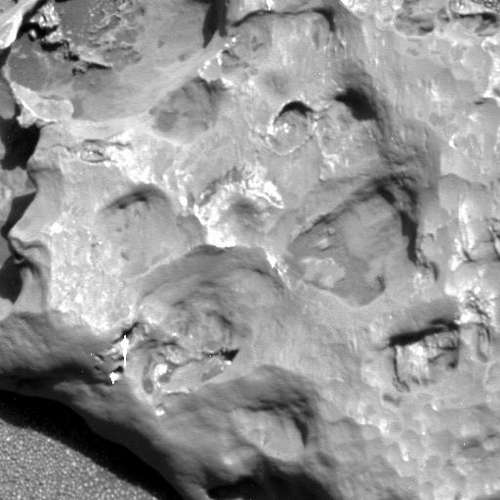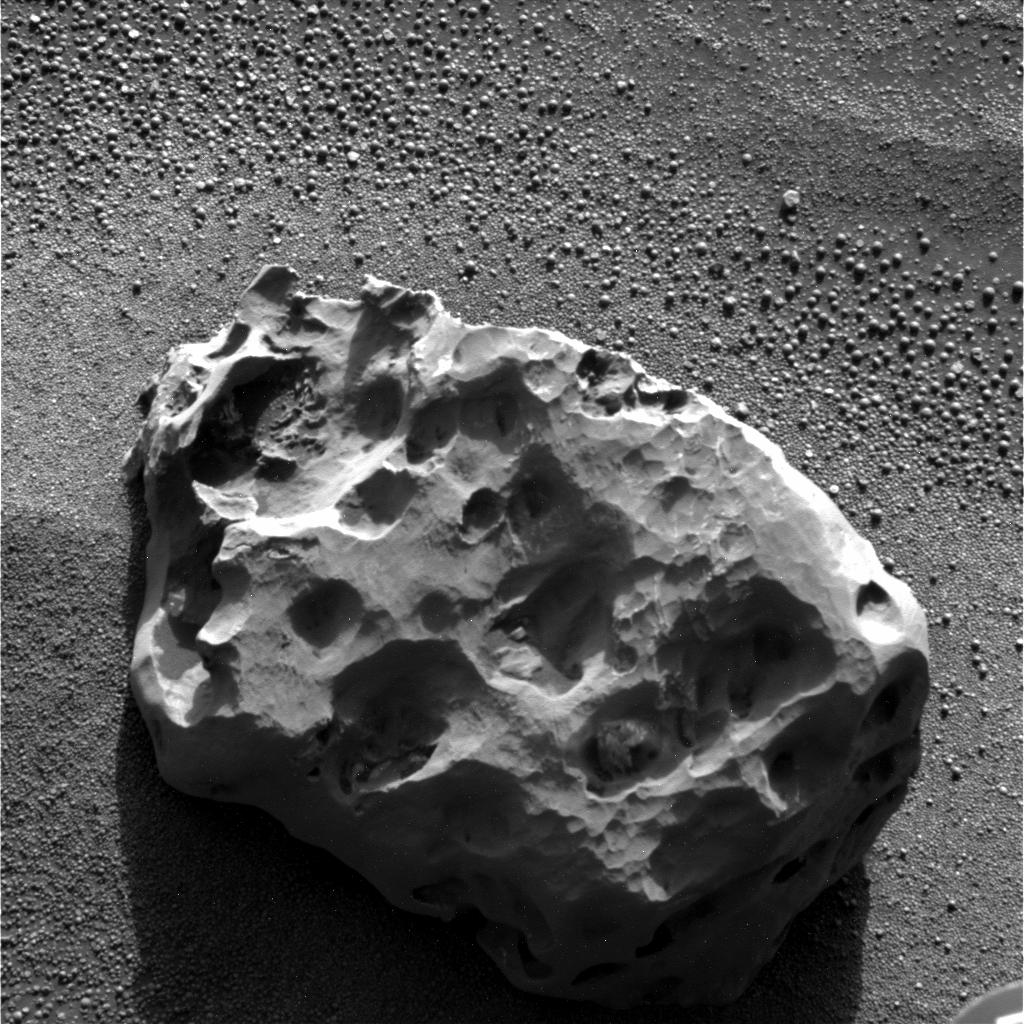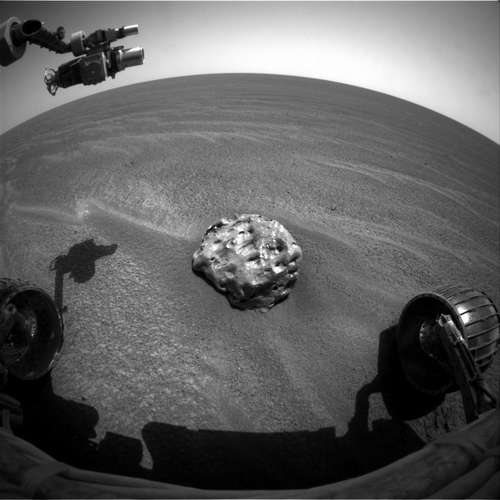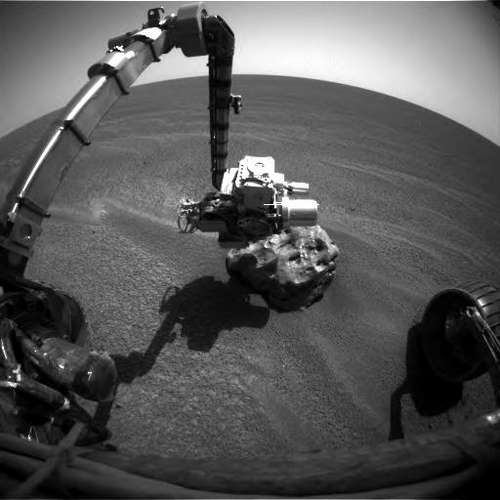|
The Enigmas on Mars 71 |
|||||||
|
Iron Meteorite on Mars PIA07269 ..
Opportunity Sol 339 NASA's Mars Exploration Rover Opportunity has found an iron meteorite on Mars, the first meteorite of any type ever identified on another planet. The pitted, basketball-size object is mostly made of iron and nickel. Readings from spectrometers on the rover determined that composition. Opportunity used its panoramic camera to take the images used in this approximately true-color composite on the rover's 339th martian day, or sol (Jan. 6, 2005). This composite combines images taken through the panoramic camera's 600-nanometer (red), 530-nanometer (green), and 480-nanometer (blue) filters. Image Credit:
|
|||||||
|
.. Heat Shield Rock Heat Shield Rock is a basketball-sized iron-nickel meteorite found on Mars by the Mars rover Opportunity in January 2005. The meteorite was formally named Meridiani Planum meteorite by the Meteoritical Society in October, 2005 (meteorites are always named after the place where they were found). Discovery Opportunity encountered the meteorite entirely by chance, in the vicinity of its own discarded heat shield (hence the name). Opportunity had been sent to examine the heat shield after exiting the crater Endurance. This was the first meteorite found on another planet and the third found on another Solar System body - two others, Bench Crater and Hadley Rille, were found on the Moon. The rock was initially identified as unusual in that it showed, from the analysis with the Mini-TES spectrometer, an infrared spectrum that appeared unusually similar to a reflection of the sky. In-situ measurements of its composition were then made using the APXS, showing the composition to be 93% Iron, 7% Nickel, with trace amounts of Germanium (~300 ppm) and Gallium (<100 ppm). Mössbauer spectra show the iron to be primarily in metallic form, confirming its identity as an iron-nickel meteorite, composed of kamacite with 5-7% nickel. This is essentially identical to the composition of a typical IAB iron meteorite found on Earth. The surface of the rock shows the regmaglypts, or pits formed by the ablation of a meteorite during passage through the atmosphere, characteristic of meteorites. No attempt was made to drill into the meteorite using the Rock Abrasion Tool (RAT), because testing on iron meteorites on Earth showed that the rover's drilling tools would be abraded and damaged. The RAT was designed to drill into ordinary rock, not into iron-nickel alloy. Meridiani Planum, the part of Mars where this meteorite was found, is suspected to have once been covered by a layer of material with a thickness of as much as 1 km which has been subsequently eroded. This means that on impact this meteorite might have created a crater, but evidence of that crater may have been subsequently erased by millions, or even billions, of years of erosion. In any case, the meteorite does not show much sign of rust. In the absence of detailed knowledge of the Mars environment, it is difficult to conclude whether it fell recently or was buried until recently. It also shows little sign of weathering. Following the identification of Heat Shield rock as a meteorite, two additional nickel-iron meteorites were identified by the Spirit rover (unofficially named "Allan Hills" and "Zhong Shan"), and several candidate stony meteorites have been identified on Mars. Note that the term "Martian meteorite" usually refers to something entirely different: meteorites on Earth which are believed to have originated from Mars, a famous example being ALH84001. References:
|
|||||||
|
..
Date: 6 January 2005 (2005-01-06) Source (TIFF converted into 100% quality JPEG) Image Credit: NASA/JPL/Cornell
Date: 25 January 2004(2004-01-25) Credi: NASA |
|||||||
|
Image
Sources
|
|||||||
| FAIR USE NOTICE: This page contains copyrighted material the use of which has not been specifically authorized by the copyright owner. Pegasus Research Consortium distributes this material without profit to those who have expressed a prior interest in receiving the included information for research and educational purposes. We believe this constitutes a fair use of any such copyrighted material as provided for in 17 U.S.C § 107. If you wish to use copyrighted material from this site for purposes of your own that go beyond fair use, you must obtain permission from the copyright owner. | |||||||
|
|
